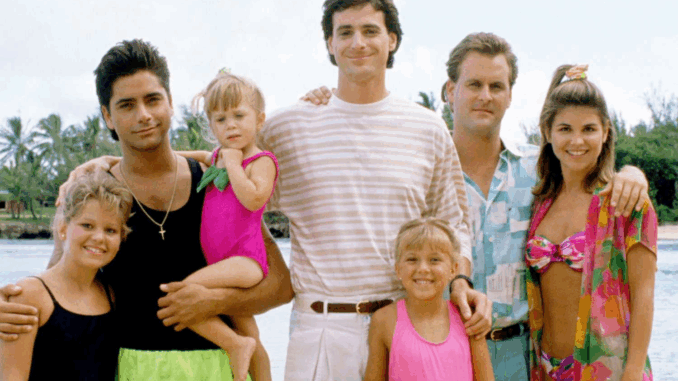
Why Full House Was the Perfect Family Show for the 90s
When you think of quintessential 90s family TV, Full House instantly comes to mind. It wasn’t just a show; it was a cultural touchstone that brought families together every week. But what exactly made Full House the perfect family show for that decade? Let’s take a deep dive into the ingredients that made it a staple of 90s television and why it still resonates today.
A Heartwarming Blend of Humor and Life Lessons
At the core of Full House was its unique ability to mix lighthearted comedy with meaningful family lessons.
-
Life Lessons Made Simple: Each episode wrapped up with a valuable takeaway—whether about honesty, kindness, or responsibility—that was easy for kids and adults to grasp.
-
Relatable Humor: The jokes were clean and clever, appealing to both parents and children without ever feeling forced.
The Tanner Family: A New Kind of Family Model
In the 90s, the traditional nuclear family was often the norm on TV. Full House offered something fresh.
-
Single Dad Household: Danny Tanner raising three daughters with the help of his brother-in-law and best friend was groundbreaking.
-
Non-Traditional Yet Loving: The show highlighted that family isn’t just about biology; it’s about love, support, and togetherness.
Catchy Catchphrases That United a Generation
Who doesn’t remember Michelle’s “You got it, dude!” or Stephanie’s “How rude!”? These catchphrases became part of everyday language for 90s kids.
-
Easy to Remember: The simple, catchy phrases made the characters instantly memorable.
-
Pop Culture Staples: They transcended the show and became a nostalgic emblem of 90s childhood.
Relatable Characters for Every Viewer
The diverse personalities of the Tanner family meant there was someone for everyone to connect with.
-
Danny Tanner: The meticulous, caring dad.
-
Uncle Jesse: The cool, rebellious musician with a heart of gold.
-
Stephanie and Michelle: The fun, spunky sisters every kid could relate to.
-
D.J.: The responsible big sister navigating adolescence.
Balancing Wholesome Entertainment with Real-Life Issues
While light and funny, Full House never shied away from addressing real challenges families face.
-
Topics like Blended Families, Divorce, and Growing Up: These were handled gently, making tough issues accessible for kids.
-
Positive Role Models: Characters consistently modeled good behavior and problem-solving skills.
The Perfect 90s Setting
The show’s San Francisco backdrop, classic Tanner home, and 90s fashion gave it an authentic feel that viewers loved.
-
Iconic House: The Tanner home became a symbol of warmth and security.
-
90s Style: The wardrobe, music, and tech perfectly captured the decade’s vibe.
A Strong Sense of Community and Support
Full House emphasized that family extends beyond just blood relatives.
-
Friends as Family: Characters like Kimmy Gibbler added fun and showed the importance of friendship.
-
Support System: The show portrayed how leaning on each other is key during tough times.
Multi-Generational Appeal
Full House was one of the rare shows that parents and kids could watch together without anyone feeling left out.
-
Adult Humor and Kids’ Fun: The clever writing included jokes that worked on different levels for all ages.
-
Shared Experiences: Families bonded over the relatable Tanner antics and lessons.
Timeless Values Wrapped in a 90s Package
The themes of love, honesty, and family loyalty resonate regardless of the decade.
-
Enduring Messages: The lessons Michelle, Stephanie, and D.J. learned still apply today.
-
Nostalgia Factor: Watching Full House now is like revisiting a simpler time.
Full House’s Influence on Future Family Sitcoms
Many family shows that came after owe a debt to the path Full House blazed.
-
Blending Comedy and Heart: This formula has been copied by numerous sitcoms.
-
Non-Traditional Families on Screen: It helped normalize diverse family setups on TV.
Why Full House Still Matters Today
Even decades later, the show remains a beloved classic thanks to its universal themes and memorable characters.
-
Streaming Popularity: New generations discover it online and fall in love.
-
Cultural References: It’s still quoted and celebrated in pop culture today.
Conclusion: Full House Was More Than Just a 90s Show — It Was a Family Experience
Full House perfectly captured the spirit of the 90s with its humor, heart, and relatable family dynamics. It wasn’t just entertainment; it was a comforting, positive presence in living rooms across the country, teaching values and bringing people together. That’s why it remains the ultimate 90s family show and continues to warm hearts worldwide.
Frequently Asked Questions
Q1: What made Full House different from other family shows in the 90s?
Its portrayal of a non-traditional family and the mix of humor with heartfelt lessons made it stand out.
Q2: Were there any controversial topics on Full House?
The show touched on topics like divorce and loss but handled them gently and positively.
Q3: Why are Full House’s catchphrases still popular?
They are simple, catchy, and perfectly capture each character’s personality.
Q4: Did Full House reflect real 90s family life?
Yes, it reflected both traditional and evolving family structures of the time.
Q5: Can Full House be enjoyed by today’s families?
Absolutely! Its messages and humor remain relevant and family-friendly.
